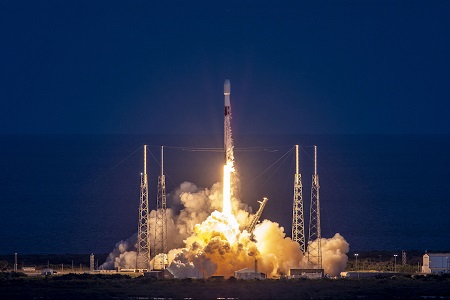The two Intelsat television broadcasting satellites are heading for geostationary orbit as part of a multibillion-dollar programme to clear C-band frequencies for 5G wireless services.

Intelsat has announced the successful launch of Galaxy 33 and Galaxy 34, geosynchronous communications satellites that will ensure service continuity to Intelsats North American media customers.
The Northrop Grumman-manufactured Galaxy 33 and Galaxy 34 satellites launched aboard SpaceXs Falcon 9 rocket from Cape Canaveral Space Force Station in Florida.
Speaking about the launch, Dave Wajsgras, CEO of Intelsat, said: “Todays launch demonstrates Intelsats long-term commitment to our media customers. The Intelsat Galaxy fleet is the most reliable and efficient media content distribution system in North America, and this investment will provide our customers with a reliable and high-performance technology path for media distribution through the next decade.”
The Galaxy 33 and 34 satellites are setting off on 15-year missions to relay C-band video and television programming for media networks and cable providers across North America.
Galaxy 33 will be the replacement satellite at 133 degrees west once it is in service in early November. The satellite will provide service continuity for distribution to cable headends throughout the United States.
Galaxy 34 will replace Galaxy 12 at 129 degrees west once it is in service in late 2022. This satellite will serve as the new restoration payload for Intelsats Galaxy cable distribution customers, allowing the previous restoration role at 121 degrees west to be converted to a core cable distribution satellite.
The launch continues Intelsats Galaxy fleet refresh plan that started with Galaxy 30 in 2020 and carries the first two of a total of seven new Intelsat satellites launching in the next six months.












































































